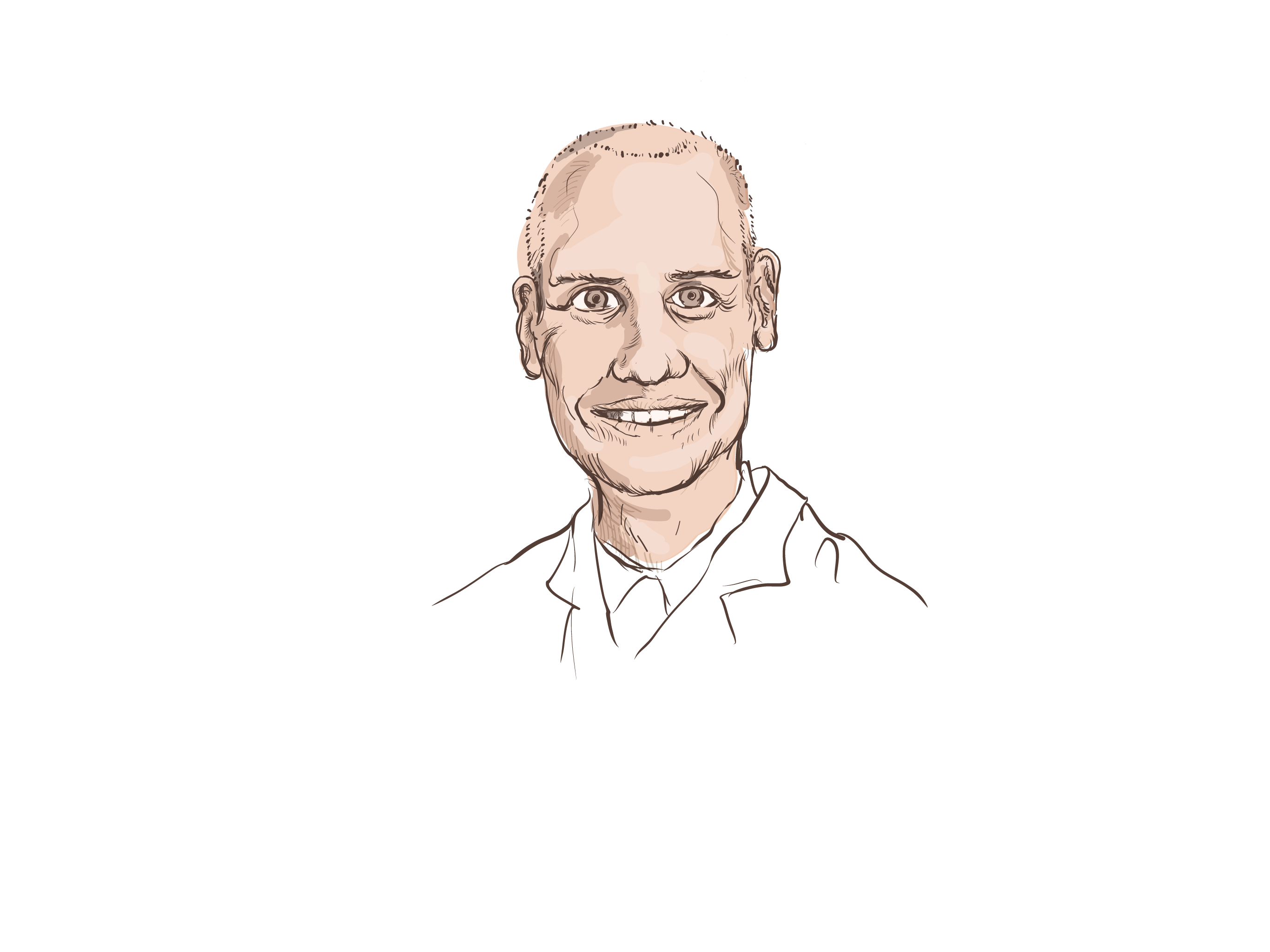
“We are living one of the most exciting times in the history of surgery and medicine,” says Daniel Sciubba, who with his team accomplished the world’s first augmented reality (AR) supported spine surgeries earlier this year.
“We are living one of the most exciting times in the history of surgery and medicine.”
“What inspires me most is innovation." The answer comes without a blink of an eye when Sciubba talks about inspiration. "Whether it happens with surgery, research, teaching, or raising children—seeing things that can be done better than they are being done now.”
Here, Sciubba dives with AO Spine deep into AR and into the future of spine surgery.
AO has been part of my career journey for decades. I first joined as a resident and was extremely impressed by, not only the world-class people that were involved, but the fact that they wanted to connect with the participants. I became a fellow in AO Spine and received the Young Researcher Grant as a young faculty. Currently, I lead the AO Spine North America Research Committee.
“AO is a large part of how I think, how I approach problems, and I look forward to seeing those colleagues regularly because I do consider AO a professional family for me.”
I owe a great deal to AO for my career: it's a large part of how I think, how I approach problems, and I look forward to seeing those colleagues regularly because I do consider AO a professional family for me.
AO serves many roles in the world currently. When people think of AO, they really think of it as an institution, where to get an unbiased, evidence-based, world-class education in orthopedics, neurosurgery, and various other disciplines. Beyond that, AO has now become a vanguard, a leader in research, as well as innovations.

“The question, to put it simply, was how to combine the natural operating that we do every day by looking at a patient, with the benefits of navigation in a less bulky way?”
Some years ago, I had the opportunity to become involved in the development of AR for spine surgery. This was extremely inspiring. The question, to put it simply, was how to combine the natural operating that we do every day by looking at a patient, with the benefits of navigation in a less bulky way?
Augmented reality is different than virtual reality. Virtual reality is, if you closed your eyes and you were surrounded by a completely new environment. You don't see the world around you; you see an environment someone created.
Augmented reality is different: you see the world around you but with things added to it in a specific time and space. So, if you would be driving and looking down the street and had to turn left, an arrow would appear on the street, maybe on the ground to guide you. Imagine seeing the sign on the street and not on your car’s navigation screen—that would be augmented reality. Our idea was to find out if can we create such for spine surgery.
The first surgery was an open lumbar fusion case. We wanted to show a case that went smoothly from beginning to end. We knew that whether or not the augmented reality provided us with what we thought it could, the surgery would go fine.
The second surgery was much more advanced. We used en bloc resection for chordoma, in which we not only used the navigation to place screws, but also the navigation to plan our osteotomies around the tumor to be as accurate and safe as possible, getting the tumor out with good oncological margins, but minimizing the damage to the local tissues.
One can see from the very first case, which was an open lumbar fusion, to the more advanced tumor and MIS operations, that the platform is extremely robust, and I think has saved us time and energy. It is adding value to these very challenging cases.
“The patients that we chose were extremely excited about the opportunity to be involved and saw this may benefit their surgery.”
The augmented reality system went through the FDA clearance and was based on a predicate of prior navigation. In light of talking to patients about AR, we've used that same protocol. In other words, we've told patients, "We use the navigation at times in the operating room, and this is no different." But we still wanted to educate them that this was a new technology when we first used it.
The patients that we chose were extremely excited about the opportunity to be involved and saw this may benefit their surgery. Secondly, they knew, as we told them, that if the technology did not work, it would not affect their outcome in any way. I think this is in part of the partnership we had, not only with the government but also with the patients themselves to make this happen. Everyone has been on the same page with the partnership to innovate.
In the first few patients, we did use backup. We had prepared without the presence of augmented reality to do that surgery without any navigation.
In other words, we placed screws freehand and corroborated the placement of our hardware using intraoperative imaging, with x-rays or even intraoperative CT scans.
Without the AR platform, it would have been business as usual. So, as a backup, we had our normal standard. We felt very confident that, if there were any problems with the system, the patient would be protected, because we would revert to the normal safe operations that we have been doing for decades.
For me, it has all the positives with none of the negatives of navigation. I must admit that I have not used navigation in a large part of my practice over the last several years. I think navigation provides the potential for increased accuracy and possibly for increased speed and efficiency in the operating room.
“It has all the positives with none of the negatives of navigation.”
I have never enjoyed having myself or my colleagues who help me operate, to turn away from the patient’s spine to look at a monitor. This is especially concerning when the spinal cord is exposed, or when other significant structures are exposed.
For someone who shares that feeling, the AR platform might be impressive to try. For people who have not embraced navigation, like me, this is quite a natural technology to use.
For people who like navigation and have embraced it fully in their practice, the AR system provides a faster and easier form of navigation. The AR system does not involve a camera that can be blocked by arms or drapes or has to be moved around. And it doesn't require the extra looking into a monitor. The image is really projected right onto your retina.
“The AR system is very impactful—it'll bring novices to expert levels, and it'll bring experts to even higher levels.”
Finally, for those of you who are really good at placing hardware, this will only make you better. You have the same tools you always used with an added benefit of navigation. And surgeons, who are novices at placing screws and manipulating the spine, this will bring to an advanced level.
So, in short, the AR system is very impactful—it'll bring novices to expert levels, and it'll bring experts to even higher levels.
Navigation has the advantage, potentially, of making the surgery more accurate because it is based on very specific advanced imaging that surgeons might not have access to if they do things freehand.
On the other hand, if surgeons operate the way they normally do and are looking at the patient and not a panel or a screen like is classically done in navigated procedures, surgeons feel more comfortable, and surgery should be therefore safer and more efficient.
I've often felt these two were at odds. If one operates in a naturally comfortable environment without having a monitor or a camera or even a robot between them, the surgery would be ideal in a way, but we might miss out on the benefits of navigation. On the other hand, if someone uses navigation, they may get the benefits of that extra accuracy, but at the expense of a bulky system that might be more inefficient.
If we can combine these two in this new augmented reality platform, we have the best of both worlds. That means a more efficient operation, potentially a faster operation, more accurate use of implants and tools, which in theory means a safer, better outcome for the patient.
The basic thing that it will give, is an easier, faster, and more accurate operation in a way that's simpler and more intuitive than all the previous navigation systems to date.
It's going to be much more natural for a surgeon to be looking at the patient rather than a monitor when navigating. It is going to be much more natural for the surgeon to put their hands on the patient, rather than having a robot in between.
“It's going to be much more natural for a surgeon to be looking at the patient rather than a monitor when navigating.”
There are so many times in the operating room where we don't see what we want to see and we have to assume, or we have to use our judgment. For example, making maneuvers around structures that are too delicate because we can't see around them, or manipulating things without actually seeing through all the bone, the vessels, or the spinal canal, and knowing where our instrument is and where it's going to be.
If we can see those things, we can be less invasive. If we can be less invasive, we can do surgeries that we've never done before in a minimally invasive manner. AR is going to become more robust and more refined; we are going to be able to see things and do things that we found too difficult to do in the past.
There will be some novel innovations that we've not thought of but what will be even more impactful is combining technology that we already have.
Currently, predictive analytics means taking pictures of patients in the clinic or the operating room and running a series of analyses to try to figure out angles, failures, complications, and outcomes in a way that the average human cannot compute. So, rather than augmented reality just showing me pictures and navigating, it's giving me guidance or judgment about what I should be doing when I'm looking at the incision. AR is giving me red flags of areas to avoid. It's giving me green target areas that I should address by showing opportunity based on big data and machine learning data.
“What will be even more impactful is combining technology that we already have.”
I can imagine a time in the future where the benefits of robotics combined with augmented reality and predictive analytics will revolutionize the way that the surgeries are done. Surgeons may not be interacting with patients in the operating room as they used to in a very old-fashioned way, but will be using real-time input from machines, from computer analysis, and from improved imaging to give us insight on the best way a surgery should be done in real-time.
But even more inspirational and aspirational is that you should look for what you can provide as you see different technologies working together. It is through our combined experience that we can innovate together, something that the AO has laid its foundation on for decades. If we continue trying new things together, look at them critically, and continue to advance, we're helping each other, our fellow man, and all of our patients simultaneously.
